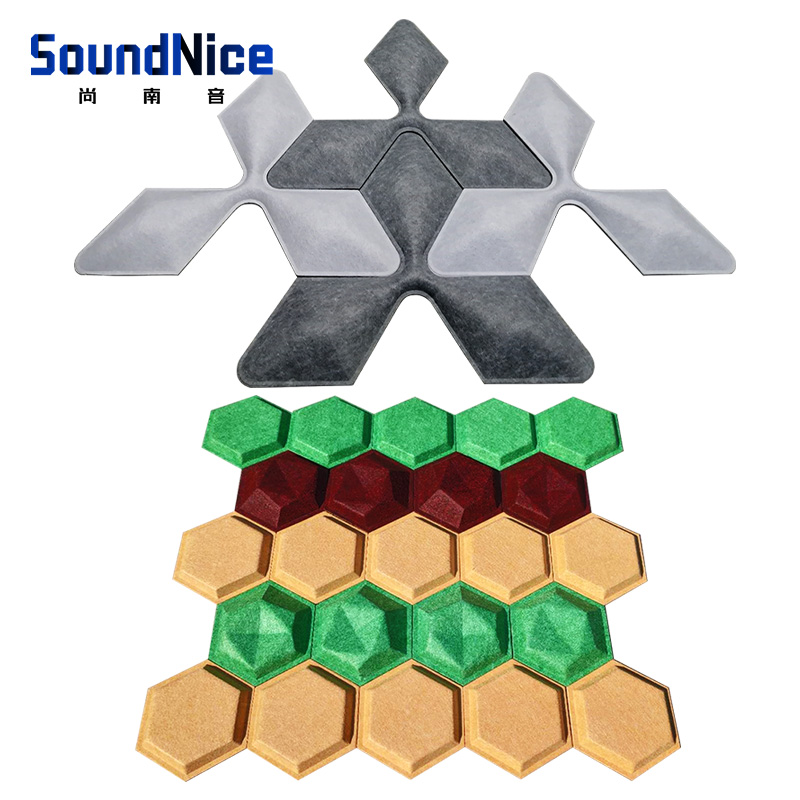
Decorative Acoustic Tiles: Combining Elegance and Sound Control
In the intricate tapestry of interior design, the interplay of aesthetics and functionality often yields remarkable results. One such fusion is evident in the realm of decorative acoustic tiles, where form and function unite to create spaces that are both visually appealing and acoustically efficient.
Understanding Decorative Acoustic Tiles
Throughout history, the pursuit of acoustic perfection has driven innovations in architectural and interior design. From ancient Greek amphitheaters to modern recording studios, the need to control sound has remained a constant. Decorative acoustic tiles represent the latest chapter in this journey, offering a contemporary solution that marries style and substance.
Decorative acoustic tiles serve a dual purpose. They are engineered to enhance the acoustic quality of a space by absorbing or diffusing sound waves, thereby reducing noise levels and echo. Simultaneously, these tiles elevate the visual aesthetics of a room, transforming bland surfaces into captivating design elements.
To achieve this harmony between beauty and functionality, decorative acoustic tiles are crafted from a variety of materials. Common choices include fiberglass, foam, wood, and metal, each with its unique acoustic properties. The manufacturing process involves precision cutting, perforation, and surface treatments to achieve the desired acoustic and aesthetic outcomes.
The Aesthetic Aspect
Design Versatility
Patterns and Shapes:Decorative acoustic tiles come in an array of patterns and shapes, from geometric precision to organic irregularity. This versatility allows designers to create visually striking installations that align with the intended ambiance.
Customization Options: Tailoring tiles to specific design visions is made possible through customization options. Personalized colors, sizes, and patterns empower designers and architects to translate their creativity into acoustic solutions.
Color Palette
Harmonizing with Interior Themes: The color palette of decorative acoustic tiles can be seamlessly integrated into existing interior themes. Whether it's blending in with a minimalist color scheme or contrasting with bold hues, these tiles offer boundless possibilities.
Creating Focal Points: In some cases, these tiles can serve as focal points, drawing the eye with vibrant or contrasting colors. This technique not only addresses acoustic needs but also adds a touch of artistic flair to a space.
The Acoustic Efficiency
Sound Absorption
Acoustic Core Materials:The effectiveness of decorative acoustic tiles in absorbing sound hinges on the choice of core materials. Fiberglass and foam cores excel in sound absorption, ensuring quieter and more comfortable environments.
NRC Ratings: The Noise Reduction Coefficient (NRC) is a critical metric to gauge a tile's sound-absorbing capacity. Tiles with higher NRC ratings are more adept at reducing noise, making them suitable for various applications.
Sound Diffusion
Tile Perforations: Perforated decorative acoustic tiles are designed to diffuse sound by scattering it in various directions. This diffusion capability enhances sound quality in spaces like auditoriums and home theaters.
Convex and Concave Shapes: Tiles with convex and concave shapes are strategically designed to break up sound waves, reducing echoes and creating an acoustically balanced environment.
Real-world Applications
Commercial Spaces
Offices:Decorative acoustic tiles find their place in modern offices, mitigating noise distractions and contributing to a productive work environment.
Restaurants: In bustling restaurants, these tiles aid in creating intimate dining atmospheres by reducing noise levels and enhancing the dining experience.
Residential Environments
Home Theaters: The acoustic excellence of these tiles enhances the audio experience in home theaters, turning ordinary movie nights into cinematic adventures.
Living Rooms: In residential living rooms, these tiles strike a balance between aesthetics and acoustics, ensuring conversations flow smoothly without echoes.
Conclusion
For improving design and functionality, decorative acoustic tiles emerge as a harmonious option. Their ability to absorb and diffuse sound, coupled with their design versatility, offers architects and interior designers a powerful tool to transform spaces.
Whether adorning commercial or residential environments, these tiles are a testament to the marriage of beauty and functionality, elevating the spaces they inhabit to new heights of aesthetic and acoustic excellence. For more sound-absorbing material options, please don't hesitate to reach out to us at [email protected]. We would be more than happy to assist you!









Leave a comment